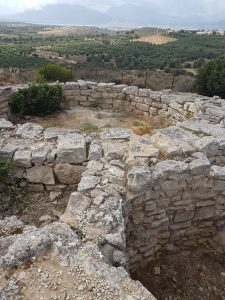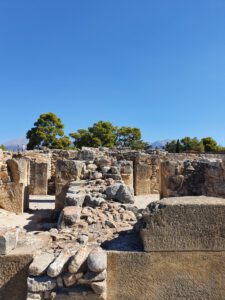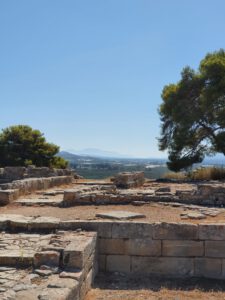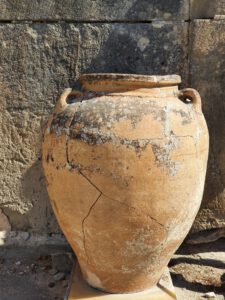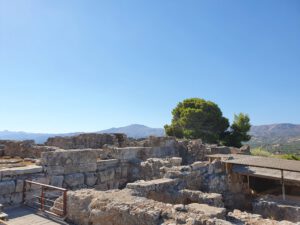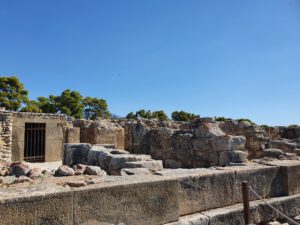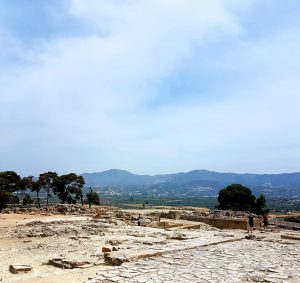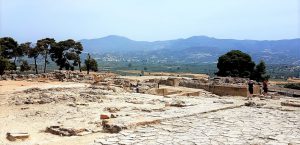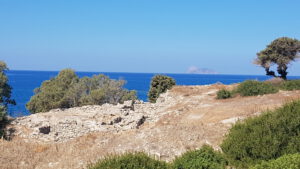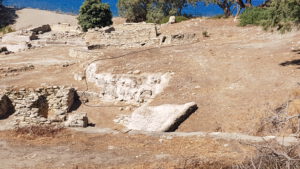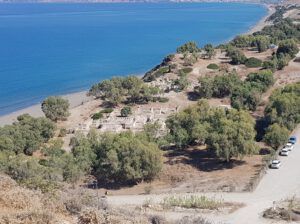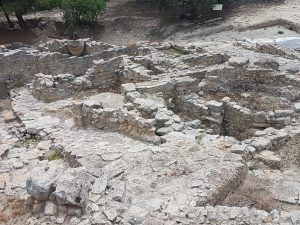Kamilari
Kamilari is a quiet, traditional village with 400 locals living in small Greek style houses on the hillside. It’s in a beautiful location with rolling hillsides and a mountain view, overlooking the Messara valley on one side and the Libyan sea on the other.
Kamilari has been inhabited since Minoan times. The name of the village is of Byzantine origin, and is derived from the word “kamilaris” meaning the one who rides a camel.
A vaulted Minoan tomb, known as the “Tholos tomb” has been discovered just outside the village. It is one of the most important tombs found in the Messara valley. Objects found here are now in the Archaeological Museum of Iraklion.
Follow the sign Tholos Tomb, drive or walk through the olive trees and see the Minoan remains on the hill: no entrance, no tourist: you have to discover this for yourself.
Phaistos
Phaistos, a world-famous excavation of a palace from the Minoan era, is 2.5 km away. While Knossos is a complete reconstruction in concrete, a lot is left to your own imagination in Phaistos. But look around you. From Phaistos you have a magnificent view of the Messara plain, and a view of the white peaks of the Psiloritis mountains. More than 3500 years ago this was already a beautiful place for a settlement.
The world famous Phaistos discus has been found here and you can view it at the museum in Heraklion.
Agia Triada
Close to Phaistos is Agia Triada, also from Minoan times. Less famous and less crowdy, but just as interesting.
Komos Beach
Komos was the Minoan harbour of nearby Phaistos. Rich finds and complex structures show the importance of this harbour for the Cretan economy. Also Komos was a purple production centre.
It is now just behind the beach. Unfortunately this site is not accessible to the public (yet), because they are still working on excavations.
Gortys
After Knossos was Gortys the most important city of ancient Crete. It is already mentioned in the Ilias en Odyssey. In Roman times since 67 b.C. Gortys was the capital of the Roman province Crete and en it then experienced its highest bloom. Christianity arrived early in de first century in Crete: St. Paul’s friend Titus is mentioned as the first bishop of Gortys and the whole of Crete.
In Gortys mostly Roman remains can be seen, and the Basilica of Titus from the 6th century. Very special is the so-called Law Code of Gortys, a long Greek inscription from the 5th century b.C., written in boustrophedon (one sentence written from left to right, the next from right to left, and so on).
Vori
In Vori you can visit the etnological museum where you can get acquainted with the history of Crete and discover how the population ived in this region.
Monasteries
The are various monasteries in the area to visit such as Odigitrias and Panagia Kaliviani.



